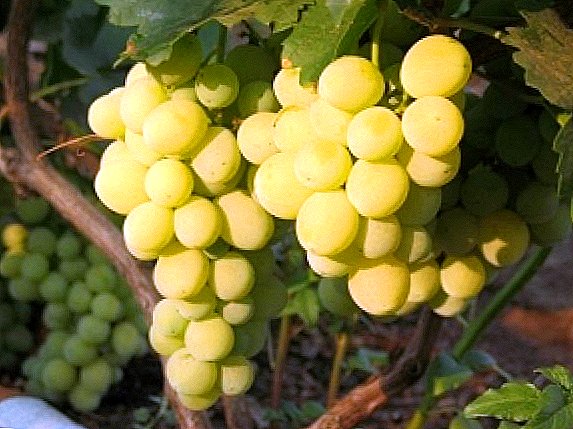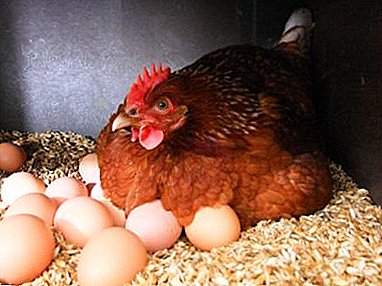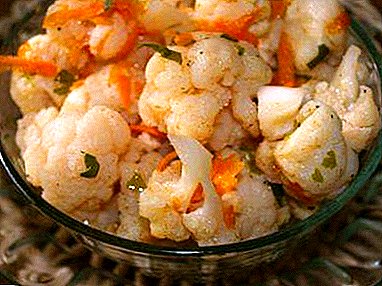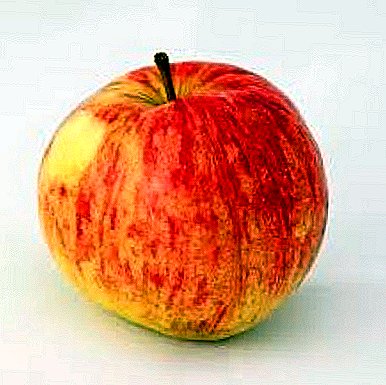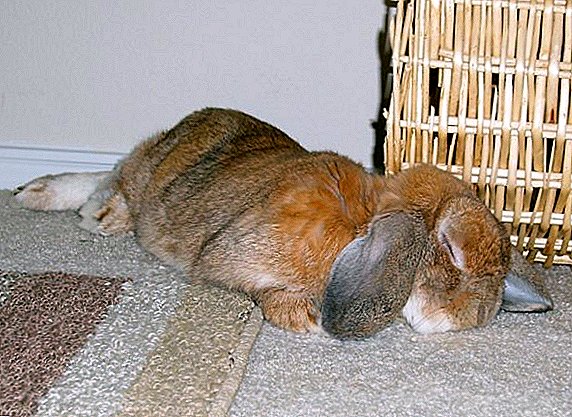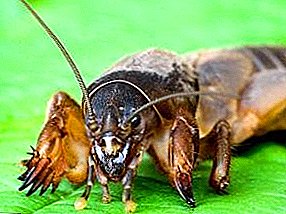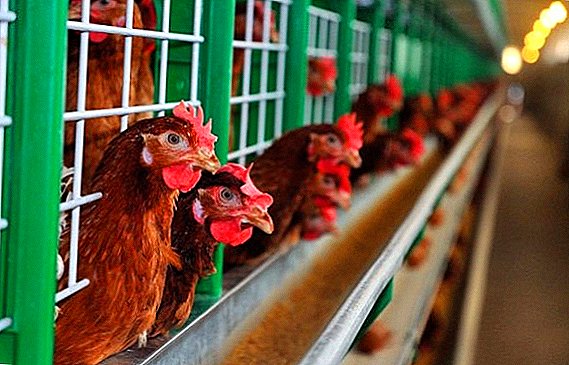 Based on the nutritional standards, one average person should consume about 290 eggs per year. Laying hens is the only source of this product, so breeding and raising laying hens is not only a popular occupation among summer residents, but also a source of profit for many farmers. Now, for more convenient and effective management of such an economy, cages are increasingly used, therefore, there is a growing interest in the problems of keeping birds in them.
Based on the nutritional standards, one average person should consume about 290 eggs per year. Laying hens is the only source of this product, so breeding and raising laying hens is not only a popular occupation among summer residents, but also a source of profit for many farmers. Now, for more convenient and effective management of such an economy, cages are increasingly used, therefore, there is a growing interest in the problems of keeping birds in them.
Basic laws of cell content
First of all, you should familiarize yourself with the standard conditions of laying hens in cages:
- One chicken should be about 10 cm feeder.
- The watering front is 5 birds for one nipple, or 2 cm for one hen.
- In one hour, the air in the hen house should change at least three times. To do this, use special fans with the ability to adjust the flow of fresh air.
- Temperature - + 16 ... +18 ° С.
- In one cage must be kept chickens of the same age and one breed.
Advantages and disadvantages
It is known that farming can be intensive or extensive. In the first case, all production is mechanized as much as possible with the goal of the greatest return of eggs and meat. This requires a lot of investment, but quickly pays off.  In the second case, the cost of mechanization of production is minimal, and the return is small. Eggs for sale are obtained only when the housing of laying hens.
In the second case, the cost of mechanization of production is minimal, and the return is small. Eggs for sale are obtained only when the housing of laying hens.
Among the advantages of such poultry farming:
- the ability to mechanize everything from feeding to collecting eggs;
- no need for a large number of staff;
- the ability to contain a large number of birds in a small area;
- control over feed consumption;
- the ability to create optimal conditions for the livestock: light, the right temperature, etc .;
- easier bird health control.
Did you know? The content of hens in the cages allows you to save up to 15% of the feed, since the feeders are installed from the outside, and chickens do not scatter and do not tread on the feed. Such savings are significant, especially in the conditions of the household.The use of cages is the best choice for producing not high-grade cheap eggs and meat. But it is worth considering that in small farms, where up to 1000 chickens are kept, the costs of production mechanization may exceed the profit from it.
 Besides the fact that the maintenance of chickens in cages requires the investment of a considerable amount of money, which is not always returned, this method of poultry farming has other cons:
Besides the fact that the maintenance of chickens in cages requires the investment of a considerable amount of money, which is not always returned, this method of poultry farming has other cons:- animal trauma, antihumanity;
- such production is not environmentally friendly;
- Chickens, which are regularly walked and not kept constantly in cages, give meats and eggs of the best quality. The demand for such products is higher, even though their price is higher.
If we talk about domestic poultry farming, the best option here is floor or walking stock, as the content of hens in cages, in this case, has a number of other disadvantages:
- the need for financial investment to purchase equipment;
- costs of cell maintenance, electricity, veterinary examinations, disease prevention;
- the need to use expensive food (otherwise there is no point in the cellular content);
- drop in bird immunity due to lack of sun and air, excessive concentration of chickens in the room.

Choice of breed
As a rule, cages often contain breeds adapted for the release of eggs, less often - those that are grown for meat. Breeds of chickens for cage and their characteristics:
- "Loman Brown". High productivity (about 310 eggs per year), which does not fall if the bird spends all the time in a cage. Large eggs. Small period of ripening (4 months). Productivity - one and a half years.
- Leghorn. Good adaptation to any living conditions. High performance (250-300 eggs per year, each weighs about 60 g). Ripening - on the 5th month, but after some time, productivity drops significantly.
- "Hisex Brown". Rush about 80 weeks. Productivity - up to 350 eggs per year, the weight of each - about 75 g. Low cholesterol in eggs.
- "Kuchinsky anniversary" hen. Good adaptability. Capacity - up to 180-250 eggs per year depending on the conditions of detention.




Learn about the nuances of breeding chickens Cochinquin, Redbaugh, Poltava, Rhode Island, Russian White, Dominant, Kuban Red, Andalusian, Maran, Amrox.
Cell requirements
The cage for laying hens is a frame of bars. The material of the bars is metal or wood. The walls are made of metal mesh (all or only one where there will be feeders, the other three walls can be made of a different material). An egg groove is also required in each cage. The bottom of the cage should be with a slope, under which should be placed retractable litter tray.
Dimensions
The cage parameters depend on the estimated number of birds that they want to put in it. The number of birds per square. m should not exceed 10 goals. Thus, for one hen it is necessary to allocate about 0.1 square meters. m. If the contain one chicken in a cage, it should be enough 0.5 square meters. m. In general, it depends on the weight of the bird. Average standard size: 80 * 50 * 120 cm.
Did you know? To extend the period of productivity of chickens cause their artificial molting. For some time the birds are left in the dark, they limit the amount of food and water they consume, and then turn on the light abruptly. From this layer, they begin to fade, the body experiences stress and is renewed, which prolongs the productive activity of the chicken.
Place to stay
Cells should be placed in the coop so that the light hits them evenly. They can be folded into several floors to save space. However, it is better that the cells form a single layer. Some owners place cages with birds even on the balconies.
Arranging a Cell Coop
In each cell, feeders and drinkers must be provided, which, as a rule, are mounted on the front side near the door. They are connected and mechanized so as not to sprinkle food or pour water separately for each cell.  In winter, the chicken coop must be heated and its temperature should be optimal for birds, on average it is about +16 ° С, in summer - about +18 ° С. It is important to ensure proper uniform lighting of the coop, since the birds do not feel the sun’s effects, and the lighting affects their health and productivity. Making the plots too lighted or too dark in the coop is dangerous for the livestock.
In winter, the chicken coop must be heated and its temperature should be optimal for birds, on average it is about +16 ° С, in summer - about +18 ° С. It is important to ensure proper uniform lighting of the coop, since the birds do not feel the sun’s effects, and the lighting affects their health and productivity. Making the plots too lighted or too dark in the coop is dangerous for the livestock.
As a rule, uniform illumination is created with the help of rheostats, which gradually switch on the light (so that the birds do not have the stress of sudden inclusion) and regulate its brightness. It is believed that the productivity of chickens is growing if the range of red, orange and yellow colors alternates indoors.
What to feed chickens in cages?
Since the birds in the cages cannot find their own food, they need careful choice of food and ration. On this depends not only the health of chickens, but also the quantity and quality of eggs laid by them.
Crumbly feed and water
As a rule, the basis of the ration of birds on almost every farm is a specialized feed for layers, which include wheat grains, sunflower oil cake, vegetable fats, calcium carbonate, vitamins and salt. Special feed for birds is introduced into the diet, when they begin a period of puberty.
Important! It is not allowed to feed the hens, which contains some dyes and drugs, as the bird's body is struggling with such nutrition.In addition to carbohydrates in the diet of chickens must be: 10-15% of proteins, about 6% of fats and fiber, minerals. Also in the trough sometimes added shell. The feeders are automated, must be at the level of the back of the bird. Chickens should also have constant access to water, so it is necessary to provide for the availability of automated drinkers.
 The necessary components of the water supply system are the gutter, fasteners, valve, drain pipes. The average amount of water that one layer per day should drink is 500 ml.
The necessary components of the water supply system are the gutter, fasteners, valve, drain pipes. The average amount of water that one layer per day should drink is 500 ml.Add greens
For normal life of laying hens it is necessary to ensure their feeding with vegetables, herbs and fruits. Green bird food must necessarily include: pre-crushed grass, food waste, vegetable skins and various weeds. At the request of the owners in the ration of laying hens you can also include pumpkin, cabbage, apples.
Risks and possible diseases
Here are the main risks that the cellular content of birds carries:
- Lack of vitamins due to the fact that the birds do not spend time on the street.
- Cellular fatigue and hysteria from low mobility, which develops into panic and ends with fractures of the wings.
- Improper lighting can cause rickets, lower egg production, and other diseases.
 The cellular content of layers can cause various diseases, especially infectious ones. Therefore, it is necessary to regularly prevent such diseases through vaccination. To prevent parasites from getting divorced into bird cages and feathers, ash baths are installed (wooden crates filled with ashes, dust and sand). After such baths are taken, chick-eaters and ticks disappear on chickens.
The cellular content of layers can cause various diseases, especially infectious ones. Therefore, it is necessary to regularly prevent such diseases through vaccination. To prevent parasites from getting divorced into bird cages and feathers, ash baths are installed (wooden crates filled with ashes, dust and sand). After such baths are taken, chick-eaters and ticks disappear on chickens.Important! After the birds have eaten, it is imperative to carefully check the feeders for the absence of food debris in them, since microorganisms start up in the feed, which can harm the birds.Thus, keeping hens in cages can become a good business, since the demand for an egg product is always there, and with the help of cell content it is easy to set up production and collection of eggs. Apply this method on large farms. For small households, the best option would be to keep the birds on the floor, since cell-based mechanization requires considerable financial investments that may not pay off.
In order for production to be productive, and for poultry to be healthy, it is important to choose the right breed, build cages, mechanize lighting, ventilation, feeding and watering of the livestock.


